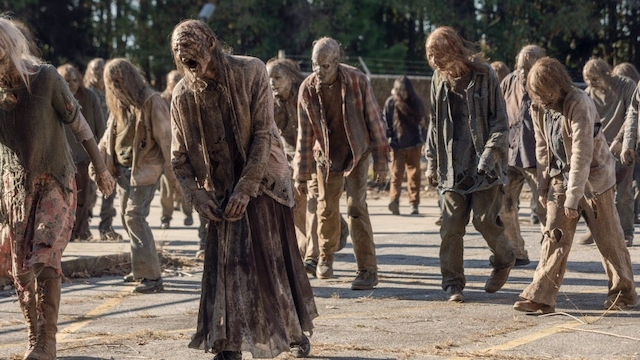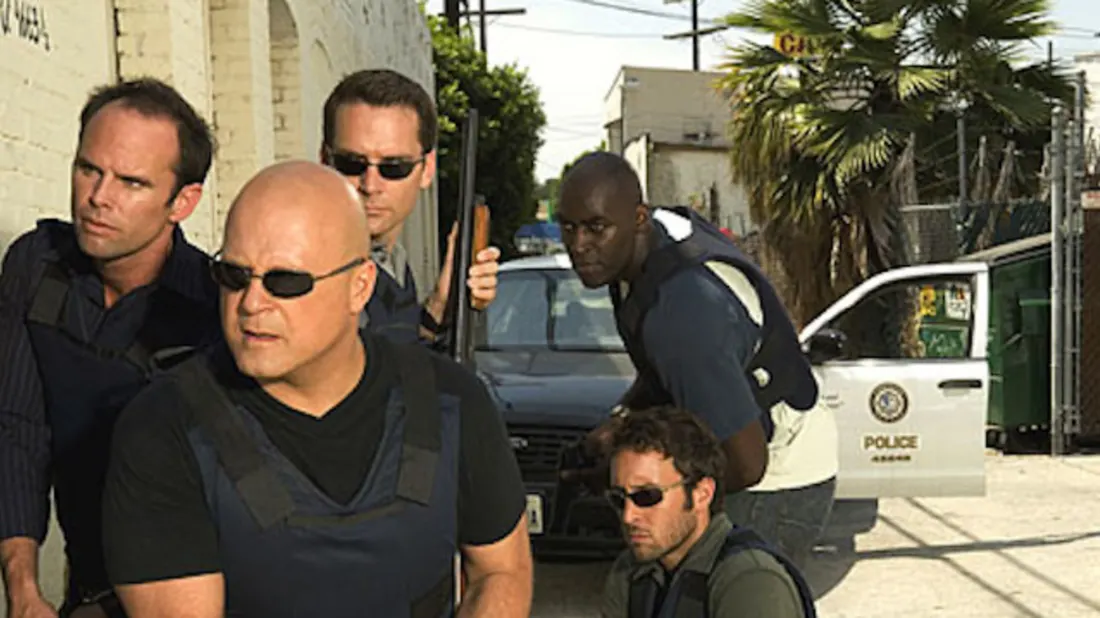1. Create Larger Than Life Characters
“On a good TV show, your character needs to be the most interesting person in their world,” Mazzara emphasizes. Characters, “need to be compelling, and active…They are doing stuff that— when there are 500 shows—you say, ‘I can’t believe that character just did that. I want to see what happens next. I want to see what they do next.’”
Mazzara gives the example of Tony Soprano, who he called “the most interesting person in his world.” Rather than writing a character like Tony Soprano, Mazzara warns that, “Very often, young writers will write about the agent who’s taken down a Tony Soprano character. They will find some surrogate for themselves as a writer, and they will put themselves into a story, but really your characters need to be larger than life.”
2. Let Character Wants Drive Your Plot
In addition to being “larger than life,” your characters need to “want something that drives them forward,” which in turn is what propels that plot. To do this effectively, Mazzara came up with three rules/questions to address: “What does my character think they want, what do they really want and what are they doing to get either one?”
According to Mazzara, “If you can’t answer those questions, you’re just going to move information. You’re just going to defer your story.” Therefore, he teaches, “It’s important every time a character enters a scene, they must want something.” Another engaging technique is using a character’s internal conflict to make them, “their own worst enemy.” Meaning, your character “would get their want, but by getting their want, they also complicate their lives, and that complication becomes their future story.” Mazzara explains that characters “burn up story because they have an engine, they need to be fed story. That story needs to put them in conflict with people, and then their mistakes lead to future story.”

3. Write Money Scenes
As you work through plots, Mazzara asserts, “One of your opportunities is to find the ‘money scenes’,” which he sees as an essential component of a compelling show. “Money scenes” are memorable scenes that develop important characters and don’t necessarily only serve to advance specific plot points. As an example of this, he describes a scene where his characters are “having an interesting conversation. They’re not setting up some future scene. They’re talking about who they are in a way.” This scene that Mazzara describes from The Shield works on a few different levels because it is so rich with subtext. The characters are discussing a situation connected to the episode’s plot, but beneath that, the scene explores their conscious and unconscious wants and their relationship with each other over the course of the show.
When Mazzara pitches, he says it comes down to selling the buyer a “money scene,” where the ”character is doing something that nobody else can do. Focus on that, and how does that complicate their life? Put that person in a difficult situation and give them no good choices.” Taking it a step further, Mazzara prompts you to do this repeatedly, creating lots of “money scenes.” In doing so, you start to bring your character and world to life.
4. Don’t Defer Story
Instead of writing “money scenes,” Mazzara explains “I find most of the time writers [just] move information.” They get caught up trying to create stories that have huge reveals over the course of a season but forget that, “The journey has to be interesting; the steps have to be interesting.” Mazzara prefers episodic payoffs, which essentially means each episode is its own story that can be remembered by a specific plot or moment.
To do this, Mazzara suggests the strategy that he used on The Shield: “If we had an ending, we moved it up. You can drop a lot of setups and then it’s your job to be imaginative, to come up with new beats; what would happen next?” He admits that, “This is hard, problematic and becomes difficult for writers,” but if you “have your story engine which is your character burning through stories, making their own mistakes, and having money scenes, you will find story along the way.”
Think about the visual images that you’re looking at, craft them on the page.
5. Use Visual Storytelling to Your Advantage
Many of the most impactful scenes in cinema are visual scenes without dialogue. Yet, instead of using visual storytelling to their advantage, “Many writers today are leaning on TV’s heritage as coming out of radio, that they are radio plays. That they’re about dialogue and conversations. That’s great, but we now have the opportunity where we have a level of filmmaking and a sophistication and an expectation in the audience where things can be represented visually. So think about the visual images that you’re looking at, craft them on the page.”
Additionally, when you write TV, you often have to say a lot in a very limited amount of space, and visual storytelling may allow you to say the same thing even more poignantly with a few glances rather than a conversation.
6. Take a “Character Pass”
Once you’ve completed your draft, Mazzara suggests doing a “character pass,” combing through your script and only reading one specific character’s lines at a time. This should be with the intention of strengthening their voice. Start with your pass of the protagonist, making sure the story is told from their point of view. In Mazzara’s words, for each character, pop their dialogue, patch their holes, and avoid writing on the nose by having “them say what they want without saying it exactly. Just f*** up one word, say something else, throw a beat in there; maybe give them a look.” This will help make the scenes that do rely on dialogue more engaging and elevate your characters.



